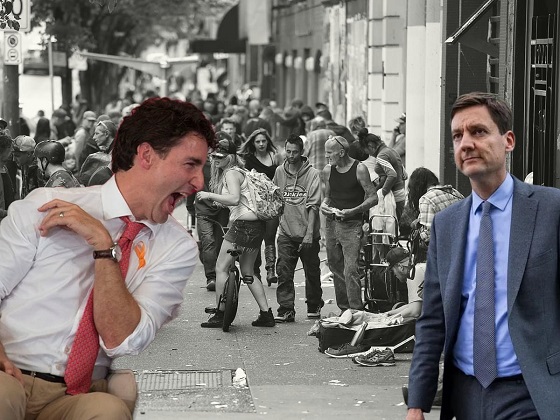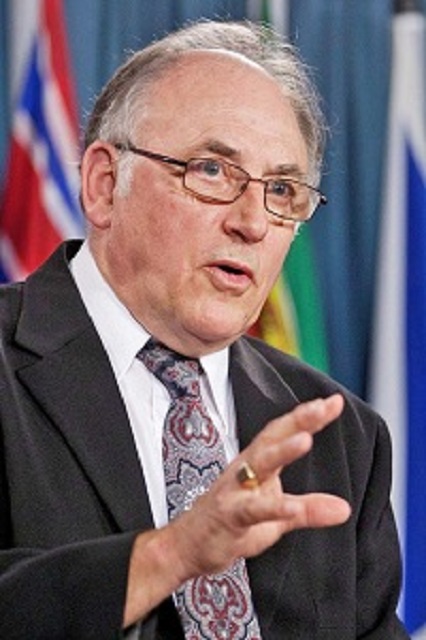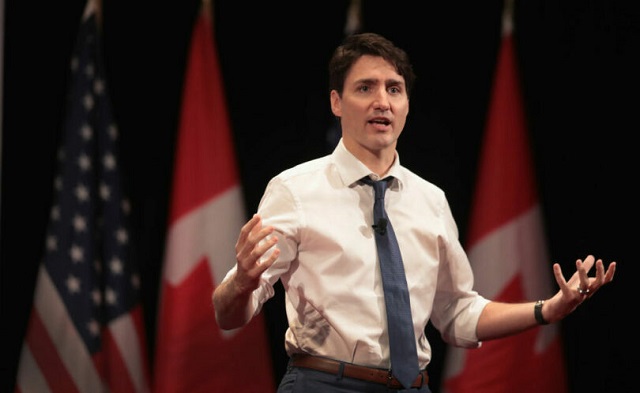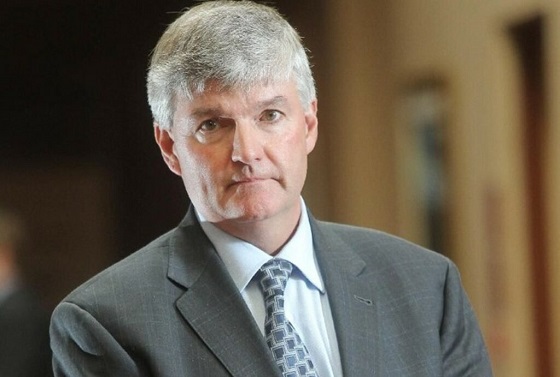COVID-19
Canada’s border agency says low risk of COVID spreading via paper used to justify ArriveCAN
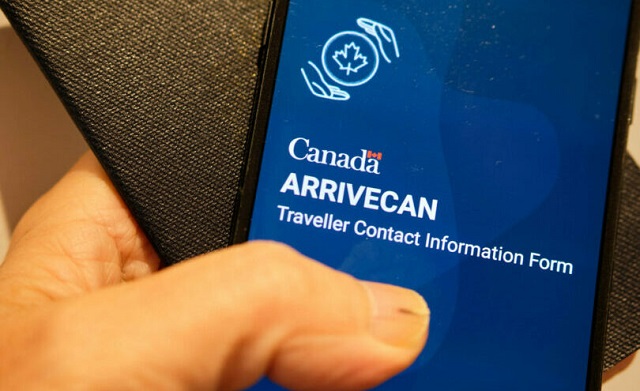
From LifeSiteNews
The controversial app, which was initially slated to cost taxpayers $80,000 but ended up costing over $50 million, is currently under investigation over allegations of corruption related to government contracts.
Despite Canadian federal authorities at the time admitting the risk of getting a COVID infection from paper forms was low, the Canada Border Services Agency (CBSA) said it was that fear that spurred the creation of the federal government’s $59.5 million scandal-ridden ArriveCAN travel app.
The admission was made by the CBSA’s vice-president Jonathan Moor on April 3, during a testimony at a House of Commons public accounts committee meeting.
“We were told we could catch COVID from touching documents,” said Moor. “Our number one priority initially working with that was to get the electronic form up and running.”
Despite Moor’s claims, Canada’s Public Health Agency’s deputy chief public health officer, Dr. Howard Njoo, had told reporters at the start of the COVID crisis that there was no evidence the coronavirus could be transmitted via paper.
“For postal workers, I am not quite sure what the risk would be,” said Njoo on March 23, 2020. “The risk is not really out there. There should be no chance of interaction.”
The agency noted at the time that proper hand-washing was enough for federal workers who handled a lot of paperwork.
Despite the agency itself admitting there was no risk of virus transmission via paper forms, Moor on March 26, during testimony at the House of Commons government operations committee, again claimed getting infections from paper was a reason ArriveCAN was needed.
“A lot of the individual Border Services officers really were very reluctant to touch paper because the Public Health Agency had said you can catch Covid from touching paper, so the necessity to get a paperless process in place was really important,” said Moor.
Moor, during testimony, also defended his agency’s work on the travel app, but admitted, “We know we made mistakes.”
This prompted Bloc Québécois MP Nathalie Sinclair-Desgagné to say to him, “Mr. Moor, all the countries in the world had to deal with that crisis and very few of them thought to have $60 million for an app like ArriveCAN.”
“In some self-respecting countries there are internal controls,” she added.
She then asked Moor if he thought he did a “good job,” to which he replied, “I do believe I did my job well during the pandemic.”
“This is a time where people were crossing the border to return back to Canada when we were told we could catch COVID from touching documents,” he said.
Besides the risk of getting infected from paper as being a reason for needing to create ArrriveCAN, the CBSA had also suggested other reasons why it was needed. In a report from 2023, it claimed that the app had saved travelers “five minutes” of time at border crossings, however, this claim was disputed by the Customs and Immigration Union.
The CBSA has also claimed that ArriveCAN “saved lives,” which is a claim it has recognized as being uncertain.
“The Agency cannot quantify the exact number of lives indirectly saved through ArriveCan,” it told MPs on December 7, 2023.
Canadians were told ArriveCAN was supposed to have cost only $80,000, but the number quickly ballooned to $54 million, with the latest number showing it cost some $59.5 million.
As for the app itself, it was riddled with tech glitches along with privacy concerns from users.
ArriveCAN was introduced in April 2020 by the government of Prime Minister Justin Trudeau and made mandatory in November 2020. The app was used by the federal government to track the COVID jab status of those entering the country and enforce quarantines when deemed necessary.
When the app was mandated, all travelers entering Canada had to use it to submit their travel and contact information as well as any COVID vaccination details before crossing the border or boarding a flight.
In February, LifeSiteNews reported that Conservative Party of Canada MPs accused the CBSA of lying to Parliament over sweetheart contracting approvals concerning ArriveCAN.
Troubled Travel apps’ creation is currently under investigation
Canadian Auditor General Karen Hogan announced an investigation of ArriveCAN in November 2022 after the House of Commons voted 173-149 for a full audit of the controversial app.
The House of Commons Standing Committee on Government Operations and Estimates (OGGO) is investigating how various companies such as Dalian, Coaradix, and GC Strategies received millions in taxpayer dollars to develop the contentious quarantine-tracking program.
LifeSiteNews reported that an investigation into ArriveCAN by Alexander Jeglic, the government’s procurement ombudsman, revealed that three-quarters of the contractors who were paid to work on ArriveCAN did not do anything in building the scandal-plagued app.
The CBSA was tasked with building the ArriveCAN app, and thus far, the investigation’s report singles out GC Strategies, saying the two-man company did not prove that its list of subcontractors was qualified to work on the app.
The procurement ombudsman’s report also found “numerous examples” in which GC Strategies “had simply copied and pasted” required work experience that was listed by the government for its contractors.
The report also noted that it was unusual the government used criteria for the app’s tender that were “overly restrictive and favoured” GC Strategies, which won the contract bid despite the fact no other bids were submitted.
Last year, LifeSiteNews reported on two tech entrepreneurs testifying before the committee that during the development of the ArriveCAN travel app they saw firsthand how federal managers engaged in “extortion,” “corruption,” and “ghost contracting,” all at the expense of taxpayers.
Alberta
Red Deer Doctor critical of Alberta’s COVID response to submit report to Danielle Smith this May

From LifeSiteNews
Leading the task force is Dr. Gary Davidson, who was skeptical of mandates at the time.
Alberta Premier Danielle Smith will soon be receiving a little-known report she commissioned which tasked an Alberta doctor who was critical of the previous administration’s handling of COVID to look into how accurate the province’s COVID data collection was, as well as the previous administration’s decision-making process and effectiveness.
As noted in a recent Globe and Mail report, records it obtained show that just less than one month after becoming Premier of Alberta in November of 2022, Smith tasked then-health minister Jason Copping to create the COVID data task force.
Documents show that the Alberta government under Smith gave the new task force, led by Dr. Gary Davidson – who used to work as an emergency doctor in Red Deer, Alberta – a sweeping mandate to look at whether the “right data” was obtained during COVID as well as to assess the “integrity, validity, reliability and quality of the data/information used to inform pandemic decisions” by members of Alberta Health Services (AHS).
As reported by LifeSiteNews in 2021, Davidson said during the height of COVID that the hospital capacity crisis in his province was “created,” was not a new phenomenon, and had nothing to do with COVID.
“We have a crisis, and we have a crisis because we have no staff, because our staff quit, because they’re burned out, they’re not burnt out from COVID,” Davidson said at the time.
Davidson also claimed that the previous United Conservative Party government under former Premier Jason Kenney had been manipulating COVID statistics.
In comments sent to the media, Smith said that in her view it was a good idea to have a “contrarian perspective” with Davidson looking at “everything that happened with some fresh eyes.”
“I needed somebody who was going to look at everything that happened with some fresh eyes and maybe with a little bit of a contrarian perspective because we’ve only ever been given one perspective,” she told reporters Tuesday.
“I left it to [Davidson] to assemble the panel with the guidance that I would like to have a broad range of perspectives.”
Smith took over from Kenney as leader of the UCP on October 11, 2022, after winning the leadership of the party. The UCP then won a general election in May 2023. Kenney was ousted due to low approval ratings and for reneging on promises not to lock Alberta down during COVID.
After assuming her role as premier, Smith promptly fired the province’s top doctor, Deena Hinshaw, and the entire AHS board of directors, all of whom oversaw the implementation of COVID mandates.
Under Kenney, thousands of nurses, doctors, and other healthcare and government workers lost their jobs for choosing to not get the jabs, leading Smith to say – only minutes after being sworn in – that over the past year the “unvaccinated” were the “most discriminated against” group of people in her lifetime.
As for AHS, it still is promoting the COVID shots, for babies as young as six months old, as recently reported by LifeSiteNews.
Task force made up of doctors both for and against COVID mandates
In addition to COVID skeptic Dr. Gary Davidson, the rather secretive COVID task force includes other health professionals who were critical of COVID mandates and health restrictions, including vaccine mandates.
The task force was given about $2 million to conduct its review, according to The Globe and Mail, and is completely separate from another task force headed by former Canadian MP Preston Manning, who led the Reform Party for years before it merged with another party to form the modern-day Conservative Party of Canada.
Manning’s task force, known as the Public Health Emergencies Governance Review Panel (PHEGRP), released its findings last year. It recommend that many pro-freedom policies be implemented, such as strengthening personal medical freedoms via legislation so that one does not lose their job for refusing a vaccine, as well as concluding that Albertans’ rights were indeed infringed upon.
The Smith government task force is run through the Health Quality Council of Alberta (HQCA) which is a provincial agency involved in healthcare research.
Last March, Davidson was given a project description and terms of reference and was told to have a final report delivered to Alberta’s Health Minister by December of 2023.
As of now, the task force’s final report won’t be available until May, as per Andrea Smith, press secretary to Health Minister Adriana LaGrange, who noted that the goal of the task force is to look at Alberta’s COVID response compared to other provinces.
According to the Globe and Mail report, another person working on the task force is anesthetist Blaine Achen, who was part of a group of doctors that legally challenged AHS’s now-rescinded mandatory COVID jab policy for workers.
Some doctors on the task force, whom the Globe and Mail noted held “more conventional views regarding the pandemic,” left it only after a few meetings.
In a seeming attempt to prevent another draconian crackdown on civil liberties, the UCP government under Smith has already taken concrete action.
The Smith government late last year passed a new law, Bill 6, or the Public Health Amendment Act, that holds politicians accountable in times of a health crisis by putting sole decision-making on them for health matters instead of unelected medical officers.
COVID-19
Inquiry shows Canadian gov’t agencies have spent $10 million on social media ads for COVID jabs

From LifeSiteNews
One campaign cost $1.5 million alone to encourage children to receive the COVID-19 shots.
A recent Inquiry of Ministry request revealed that Canada’s Public Health Agency (PHAC) along with Health Canada have combined to spend approximately $9.9 million on social media advertising to promote the experimental COVID injections since 2020.
The Inquiry of Ministry information showing the large advertising spending on the COVID shots became known as the result of a request from Conservative Party of Canada MP Ted Falk, who demanded answers about what was being spent by officials to promote the shots.
The information published on April 8 shows that PHAC and Health Canada spent approximately $4.6 million on production costs of ads, with $5.3 million on actual advertising of the COVID shots on social media platforms Instagram, TikTok, Facebook, LinkedIn, Snapchat, and Pinterest from 2020 to 2024.
One mass COVID vaccination advertising campaign titled the “Ripple Effect” cost about $1.8 million alone. PHAC claimed the campaign served to “remind Canadians about the collective vaccination effort required to see a reduction in restrictions and public health measures.”
Other campaigns ranged in spending from $75,000 to $564,000 to promote the shots to young adults.
PHAC also spent $1.5 million on a campaign to promote the COVID shots to parents with kids to try and encourage them to get their kids injected.
It should be noted that PHAC, as per a 2021-22 Departmental Results Report, had tried “diligently to counter false statements and misinformation” to prop up the COVID shots. In 2023, PHAC was looking to hire social media influencers to promote the jab to Canadians who were opposed to taking the shots.
Health Canada previously was found to have spent some $132,000 on social media influencers to promote the COVID shots.
As reported by LifeSiteNews recently, the Trudeau government is still under contract to purchase multiple shipments of COVID shots while at the same time throwing away $1.5 billion worth of expired shots.
The continued purchase of COVID jabs comes despite the fact the government’s own data shows that most Canadians are flat-out refusing a COVID booster injection. It also comes as the government has had to increase spending on Canada’s Vaccine Injury Program (VISP), as reported by LifeSiteNews last week.
Canadians’ decision to refuse the shots also comes as a Statistic Canada report revealed that deaths from COVID-19 and “unspecified causes” rose after the release of the so-called “safe and effective” jabs.
LifeSiteNews has published an extensive amount of research on the dangers of receiving the experimental COVID mRNA jabs, which include heart damage and blood clots.
-

 conflict2 days ago
conflict2 days agoCol. Douglas Macgregor torches Trump over support for bill funding wars in Ukraine and Israel
-
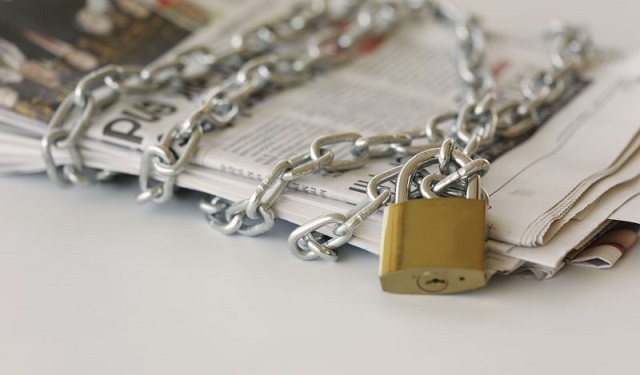
 Censorship Industrial Complex1 day ago
Censorship Industrial Complex1 day agoNow We Are Supposed to Cheer Government Surveillance?
-

 Alberta1 day ago
Alberta1 day agoRed Deer Doctor critical of Alberta’s COVID response to submit report to Danielle Smith this May
-

 Alberta16 hours ago
Alberta16 hours agoActivity-Based Hospital Funding in Alberta: Insights from Quebec and Australia
-

 Health2 days ago
Health2 days agoTransgender activists are threatening the author of scathing UK report on child ‘sex changes’
-

 Business14 hours ago
Business14 hours agoUN plastics plans are unscientific and unrealistic
-
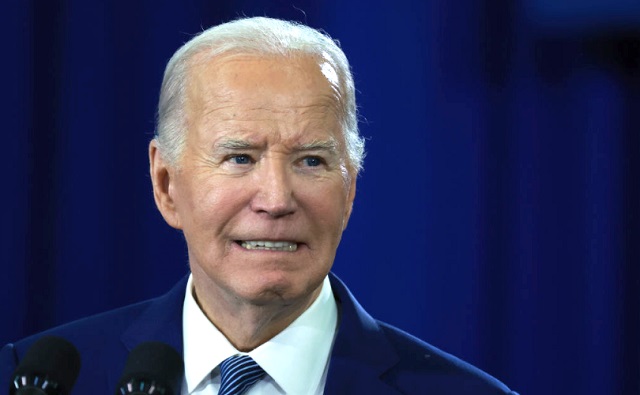
 International2 days ago
International2 days agoBiden admin expands Title IX to include ‘gender identity,’ sparking conservative backlash
-

 Business12 hours ago
Business12 hours agoTaxpayers criticize Trudeau and Ford for Honda deal

